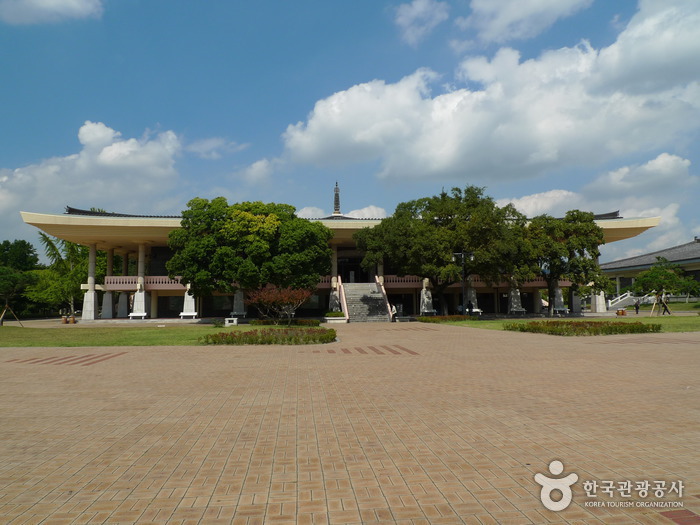
Gyeongju National Museum rests deep in tradition, with a history of about 90 years. Representing Gyeongju, which used to be the capital of Silla (BC57~AD935), the museum is where you can view the cultural history of Gyeongju district. The exhibition hall is divided into 4 large parts: the Main hall, Annex I, Annex II, and the Outdoor Exhibit Area (Museum Grounds). In the Main Hall you can see earthenware, and in the Arts and Crafts room you can see various artwork and craftwork. Gukeun Memorial Hall exhibits 666 artifacts, which are the personal collection of Dr. Lee Yang-Seon, donated to the museum for preservation purposes. Artifacts from the great tombs of the city of Gyeongju are exhibited in Annex I, the Gobun Gallery. There are many glittering accessories, such as golden crowns, crown ornaments, belts, earrings etc. You can experience the superb artistry from the Silla Period through these artifacts. Approximately 30,000 artifacts were excavated from Anapji Pond, the most significant of which are exhibited in Annex 2, the Anapji Gallery. The other galleries exhibit household goods. These various types of items show life in the Royal Court during the Silla Period. After the galleries, you can move on to the Outdoor Exhibit Area, which is the Museum Grounds. King Seongdeok’s Bell located there, is the most renowned of Buddhist temple bells. You cannot help but feel solemn as you watch the relic. There is also a variety of artifacts from royal palaces and temples exhibited here. Buddhist sculptures make up the majority of the stone artifacts. If you are a traveler interested in Buddhism or the magnificent culture of royal palaces, this is a place you do not want to miss.
No comments:
Post a Comment